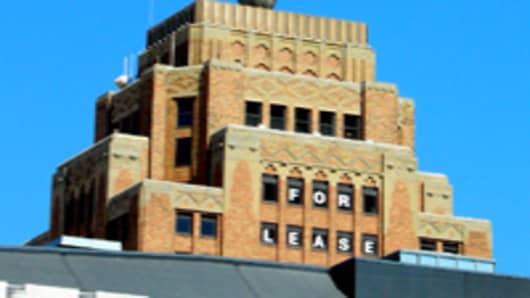Anyway, CoStar's CEO Andrew Florance arrived this morning for the interview on this phenomenon, but like the cat that ate the canary, said, "Before we start, I think we have some news for you."
At about 1am today, after all their data had run through whatever data system it runs through, they learned that the office vacancy rate had turned for the first time since Q3 2007. Not by a lot, mind you; just 6 basis points, from 13.86 percent to 13.79 percent. Jobs are coming back.
"If you look a March, the year over year swing in job growth was just phenomenal. The prior year had 3/4's of a million jobs lost. This year, you went to a quarter million jobs gained approximately, so it is a million jobs swing. That is a good fundamental driver for commercial real estate," says Florance.
This is an important turn for commercial brokerages, like CB Richard Ellis, Grubb & Ellis, Jones Lang LaSalle, not to mention big investors in commercial real estate like Tishman Speyer, Blackstone, Maguire Partners, Boston Properties, SL Green, Macklowe Properties, to name a few. It could also be a small sign of relief to big banks like Bank of America and Wells Fargo, which have billions in commercial mortgages, which have been souring at record rates.



